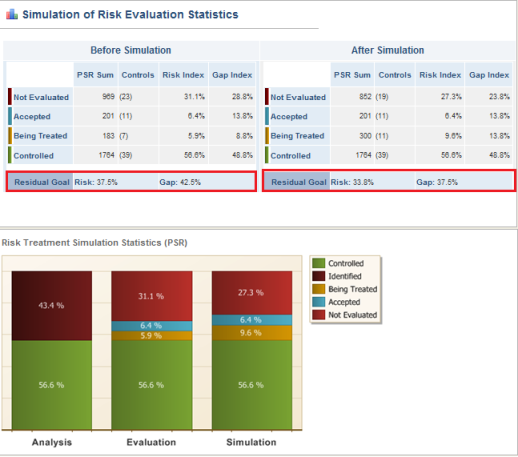
The What-If simulator allows various risk treatment scenarios for non-implemented controls to be simulated.
By assuming that risks treated through events are completely eliminated, the simulator displays the resulting values of the risk indicators for each simulated scenario (Risk Index, Gap Index, and PSR). The risk reduction resulting from the decision to treat them can then be observed (see figure below).
Note: The What-If simulator is simply a tool to assist you in the decision-making process. It does not need to be used to treat risks in the system.

In this simulation, a comparison is shown between the status of the risks and their indicators before the simulation and after the simulation, assuming these risks are in fact treated. For example, according to the figure above, before the simulation 23 controls were not evaluated, 11 were accepted, and 7 were undergoing treatment. This resulted in a Residual Goal of 37.5% for the Risk Index and 42.5% for the Gap Index.
After the simulation, 19 controls were still not evaluated, 11 were still accepted, but 11 had now been sent for treatment, generating a Residual Goal of 33.8% for the Risk Index and 37.5% for the Gap.
If the Residual Goal of the Risk Index and Gap Index does not meet your expectations, you can create new simulations until you reach the desired level and make the final decision on which non-implemented controls you should send to treatment.